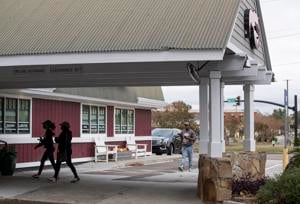In a seafood town like Charleston, it's notable that Red Lobster has outlasted most of its direct local competition. But it’s no longer the catch of the day. And financially speaking, it’s underwater, in an ocean of debt.
Late last weekend, the troubled chain that introduced the masses to deep-sea dining in the 1970s filed for bankruptcy protection in its home state of Florida. It has lined up $100 million to pay employees and fund other day-to-day expenses. "The company intends to use the proceedings to drive operational improvements, simplify the business through a reduction in locations and pursue a sale of substantially all of its assets as a going concern," Orlando-based Red Lobster said in a written statement.

In taking the bankruptcy plunge, the chain's newly appointed skipper dropped a whopper of a report that targeted some of the decisions that cast the business adrift, citing questionable management calls that go back a decade. Signs of serious distress at the privately held $2 billion-a-year company have bobbed to the surface recently. Earlier this month, Red Lobster auctioned all of the equipment at more than 50 locations it recently shut down.
Among the casualties of the "footprint rationalization” plan was a restaurant at 10000 U.S. Highway 17 in North Myrtle Beach.
Sunday's bankruptcy filing included a 45-page declaration from Jonathan Tibus , a restructuring consultant who took the helm as CEO in March, explaining to the court and creditors why he was ta.























